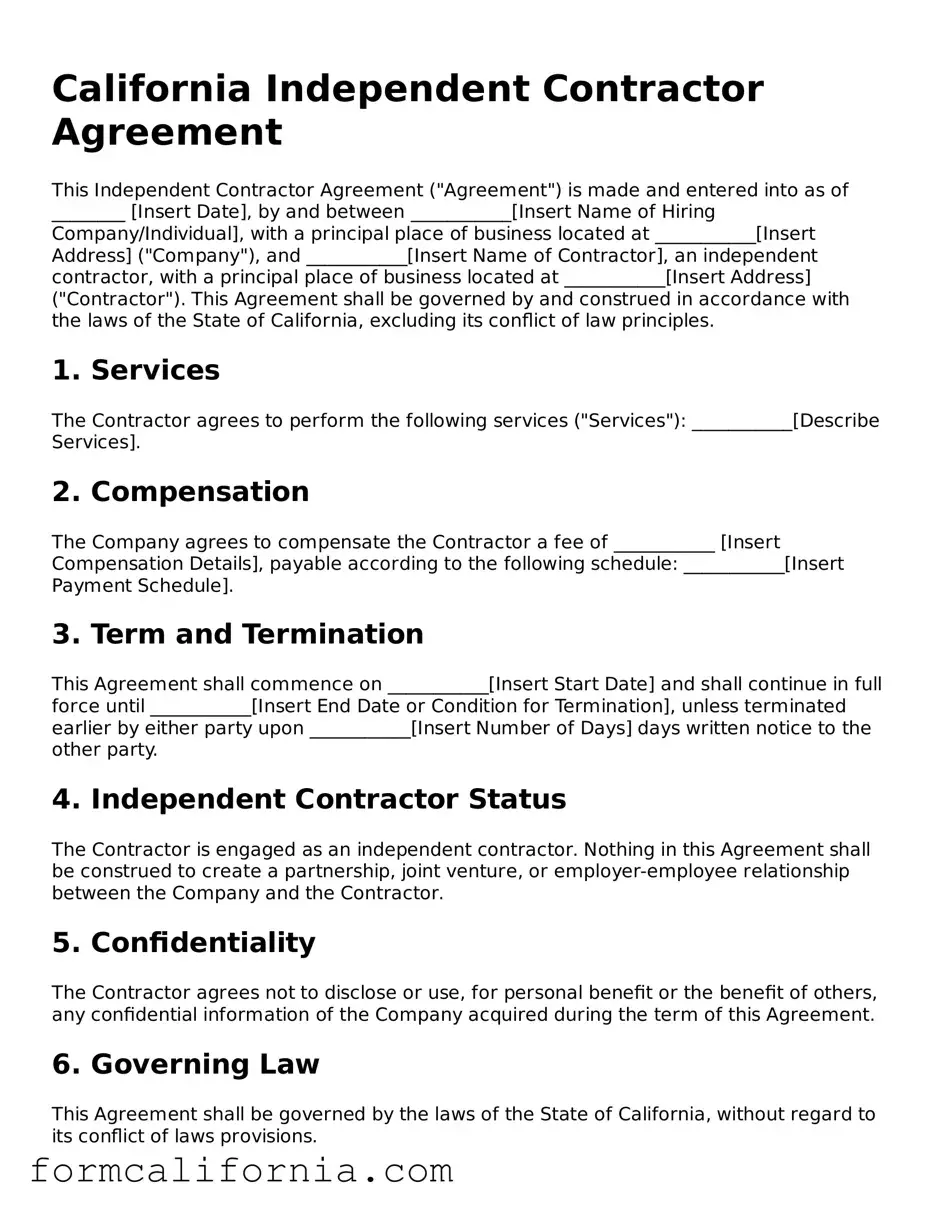California Independent Contractor Agreement
This Independent Contractor Agreement ("Agreement") is made and entered into as of ________ [Insert Date], by and between ___________[Insert Name of Hiring Company/Individual], with a principal place of business located at ___________[Insert Address] ("Company"), and ___________[Insert Name of Contractor], an independent contractor, with a principal place of business located at ___________[Insert Address] ("Contractor"). This Agreement shall be governed by and construed in accordance with the laws of the State of California, excluding its conflict of law principles.
1. Services
The Contractor agrees to perform the following services ("Services"): ___________[Describe Services].
2. Compensation
The Company agrees to compensate the Contractor a fee of ___________ [Insert Compensation Details], payable according to the following schedule: ___________[Insert Payment Schedule].
3. Term and Termination
This Agreement shall commence on ___________[Insert Start Date] and shall continue in full force until ___________[Insert End Date or Condition for Termination], unless terminated earlier by either party upon ___________[Insert Number of Days] days written notice to the other party.
4. Independent Contractor Status
The Contractor is engaged as an independent contractor. Nothing in this Agreement shall be construed to create a partnership, joint venture, or employer-employee relationship between the Company and the Contractor.
5. Confidentiality
The Contractor agrees not to disclose or use, for personal benefit or the benefit of others, any confidential information of the Company acquired during the term of this Agreement.
6. Governing Law
This Agreement shall be governed by the laws of the State of California, without regard to its conflict of laws provisions.
7. Entire Agreement
This Agreement constitutes the entire agreement between the parties with respect to the subject matter herein and supersedes all prior or contemporaneous agreements, understandings, and negotiations, both written and oral.
8. Signature
IN WITNESS WHEREOF, the parties have executed this Agreement as of the date first above written.
Company: ___________[Insert Name]
Signature: ___________ [Insert Signature]
Date: ___________[Insert Date]
Contractor: ___________[Insert Name]
Signature: ___________ [Insert Signature]
Date: ___________[Insert Date]
